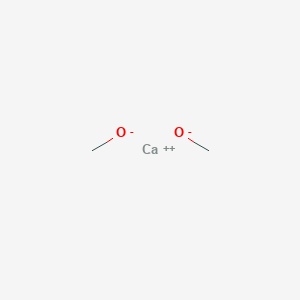Causes
There are many causes of urate deposition in layer chickens, and the main causes are related to feeding and management, and unscientific feed formulation and renal dysfunction. We see 205 cases for the following reasons:
1. Not according to scientific formula. The protein content of feed is too high, and the metabolites of nitrogen from the birds are excreted through the kidneys as urate, thus burdening the kidneys.
2. Chickens or young chickens and breeder roosters are fed on laying hens. The proportion of calcium in feed is too high, and the quality of protein is poor. Most amino acids of poor protein do not meet the nutritional needs of chickens, but are converted to uric acid by deamination and oxidation. In combination with excess calcium, urate is accumulated in the kidney and ureter. Kidney function. For example, if a chicken farmer feeds laying hens by purchasing artificial soybean meal containing stone powder, the calcium and phosphorus content in the feed is still proportionate to the normal ratio, resulting in a serious deposition of layered urate.
3. Lack of vitamin A, or long-term intestinal inflammation, affect the absorption of vitamin A, and vitamin A has protective mucosal effects, if the lack of mucosal keratinization and shedding, leading to ureteral urinary tract disorders and renal and ureteral urate deposition .
4. Insufficient drinking water causes the concentration of urine to cause the deposition of urate in the ureter, and the renal ureter is obstructed by urate crystals. Most of this happens in broiler breeders that control drinking water.
5. Abuse of drugs or excessive long-term use of sulfa drugs, serious damage to the kidney.
Salmonella infections, coccidiosis, avian infectious bronchitis, infectious bursal disease, and chicken adenovirus infection all induce urate deposition.
Symptoms and pathological changes
Suffering from a lack of energy in the chicken, pulling white dilute feces, anemia, severe chicken cocks after atrophy, spasm, and some joint swelling, a large number of urate deposits inside. There are two kinds of visceral and joint types, sometimes the two types occur at the same time. The visceral nephropathy and ureters accumulate a large amount of urate crystals. In severe cases, the throat is scattered in small rice grains, white pebbles, pericardium, liver and A large amount of stone powder-like urate deposits are deposited on the surface of the visceral tube and serosa. Among them, 3 cases of false pods containing powdered stone were used as protein feeds due to their mistaken purchase or misuse. A large amount of uric salt crystals like pebbles were deposited in the ureters of the diseased chickens. Touching the ureters by hand appeared to be both sharp and with shuttle angles.
Prevention
At present, there are no effective treatment methods at home and abroad. If the disease is mild, the choline chloride and renal detoxification drugs and multidimensional drugs can be added to feed and drinking water. In order to prevent the occurrence of the disease, we must start with prevention. We must carefully analyze the causes of various nutrients according to their different ages and take corresponding measures.
1. Protein or calcium ratio is too high should immediately reduce the protein or calcium content, the general requirements of chicken calcium and phosphorus: 0 weeks to 6 weeks old calcium: 0.9%, phosphorus 0.6%; 6 weeks to 20 weeks of age : Calcium 0.75%, Phosphorus 0.5%; Calcium 2% in pre-lay to 5% egg production; Calcium 3.8%, Phosphorus 0.6% in 5% or more eggs. When the chickens produce eggs to more than 10%, the protein supply can be increased to 8%. For example, with concentrated feed ingredients, the amount of concentrated ingredients should not exceed 30%.
2. Pay attention to the storage of feeds to prevent mildew in feeds. Vitamins should be added now to prevent the high-temperature deliquescence caused by mixing with the feed for a long time, resulting in the destruction of vitamin oxidation. In particular, do not purchase artificial soybean meal and artificial soybean meal containing stone powder for protein feed.
3. Farmers in rural areas can feed more chopped green feed and add appropriate amounts of multidimensional food.
4. Pay attention to the supply of clean drinking water, broiler breeders do not control drinking water too much.
5. To use drugs scientifically to avoid drug abuse, medications should be administered according to the amount and course of treatment. In particular, the use of iodized sulphonamides should be used with caution. Even the use of baking soda must be added.
Calcium Methoxide CAS No.2556-53-8
Calcium Methoxide Basic Information
CAS: 2556-53-8
MF: C2H6CaO2
MW: 102.15
EINECS: 219-873-6
Mol File: 2556-53-8.mol
Calcium Methoxide Chemical Properties
Melting point >385 °C(lit.)
form Powder
color off-white
Sensitive moisture sensitive
CAS DataBase Reference 2556-53-8(CAS DataBase Reference)
EPA Substance Registry System Methanol, calcium salt(2556-53-8)

Calcium Methoxide,Calcium Methoxide Solubility,Calcium Ethanoate Synthesis,Calcium Ethoxide Solubility,Calcium Ethoxide Synthesis
ShanDong YingLang Chemical Co.,LTD , https://www.sdylhgtrade.com